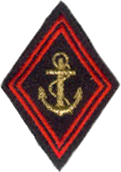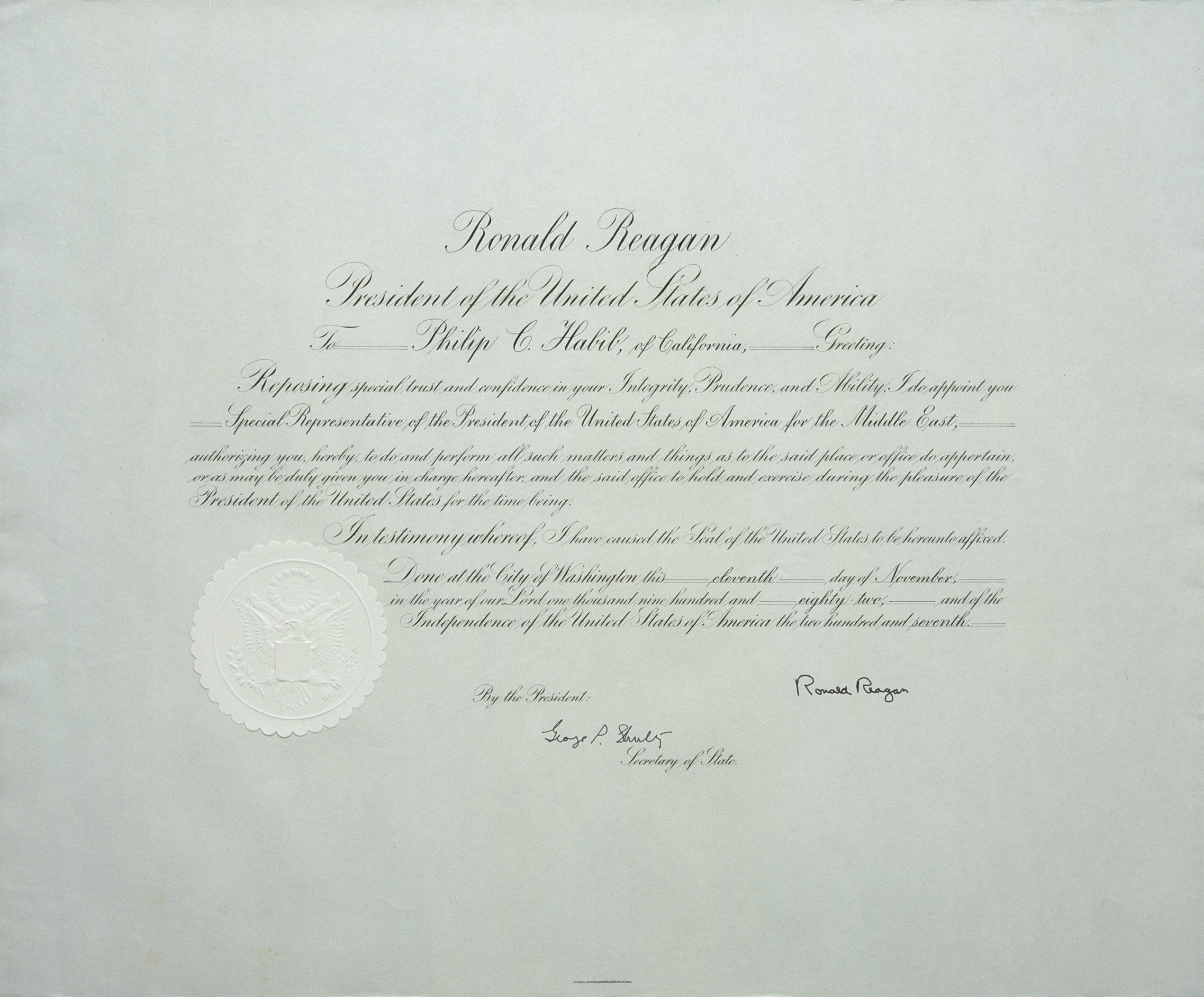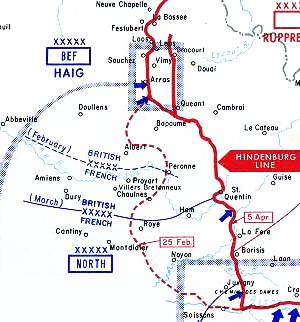|
Régiment D'infanterie-chars De Marine
The Régiment d'infanterie chars de marine RICM in French, (R.I.C.M, or Marine Infantry Tank Regiment) is a light cavalry regiment of the French Army, successor to the Régiment d'infanterie coloniale du Maroc RICM (R.I.C.M, or Colonial Infantry Regiment of Morocco). Created in June 1915, then designated accordingly in December 1958, by change of the infantry colonial regiment of Morocco, the regiment is part of the Troupes de Marine and is of a cavalry armoured specialty. The RICM is the most decorated regiment of the French Army. The regiment is attached to the 9th Marine Infantry Brigade 9e BIMa. Creation and different nominations * In August 1914: creation of the 1st Mixed Colonial Infantry Regiment (french: 1er Régiment mixte d'infanterie coloniale, R.M.I.C). * In December 1914 : the regiment was designated as the 1st Marching Colonial Infantry Regiment (french: 1er Régiment de marche d'infanterie coloniale, R.M.I.C). * On June 9, 1915 : creation of the Colonial Infant ... [...More Info...] [...Related Items...] OR: [Wikipedia] [Google] [Baidu] |
French Army
The French Army, officially known as the Land Army (french: Armée de Terre, ), is the land-based and largest component of the French Armed Forces. It is responsible to the Government of France, along with the other components of the Armed Forces. The current Chief of Staff of the French Army (CEMAT) is General , a direct subordinate of the Chief of the Defence Staff (CEMA). General Schill is also responsible to the Ministry of the Armed Forces for organization, preparation, use of forces, as well as planning and programming, equipment and Army future acquisitions. For active service, Army units are placed under the authority of the Chief of the Defence Staff (CEMA), who is responsible to the President of France for planning for, and use of forces. All French soldiers are considered professionals, following the suspension of French military conscription, voted in parliament in 1997 and made effective in 2001. , the French Army employed 118,600 personnel (including the Fo ... [...More Info...] [...Related Items...] OR: [Wikipedia] [Google] [Baidu] |
Multinational Force In Lebanon
The Multinational Force in Lebanon (MNF) was an international peacekeeping force created in August 1982 following a 1981 U.S.-brokered ceasefire between the Palestine Liberation Organization (PLO) and Israel to end their involvement in the conflict between Lebanon's pro-government and pro-Syrian factions. The ceasefire held until June 3, 1982 when the Abu Nidal Organization attempted to assassinate Shlomo Argov, Israel's ambassador to London. Israel blamed the PLO and three days later invaded Lebanon. West Beirut was besieged for seven weeks before the PLO acceded to a new agreement for their withdrawal. The agreement provided for the deployment of a Multinational Force to assist the Lebanese Armed Forces in evacuating the PLO, Syrian forces and other foreign combatants involved in Lebanon's civil war. The four-nation MNF was created as an interposition force meant to oversee the peaceful withdrawal of the PLO. The participants included the U.S. Multinational Force (USMNF), whi ... [...More Info...] [...Related Items...] OR: [Wikipedia] [Google] [Baidu] |
Henri Bentégeat
Henri Bentégeat (born 27 May 1946 in Talence, France) is a French Army general who served first as the Chief of the French Defence Staff between 2002 and 2006 and then as the chairman of the European Union Military Committee between 2006 and 2009. Biography Bentégeat graduated from the French military academy '' École spéciale militaire de Saint-Cyr'' in 1967 and opted for the ''Troupes de marine'' branch. He held various staff and command positions - including several deployments to Senegal, Chad and Central Africa - until he took command of Régiment d'infanterie-chars de marine (RICM), which already was a professional regiment at a time when most of the French Army was still drafted. From 1990 to 1992, he served as Assistant Defence Attaché in Washington, D.C. and from 1996 to 1998 was commander, French armed forces, West Indies (Lesser Antilles). He served as Assistant to the Chief of the Military Staff of the President of the Republic from 1993. Bentégeat was promo ... [...More Info...] [...Related Items...] OR: [Wikipedia] [Google] [Baidu] |
First Indochina War
The First Indochina War (generally known as the Indochina War in France, and as the Anti-French Resistance War in Vietnam) began in French Indochina from 19 December 1946 to 20 July 1954 between France and Việt Minh (Democratic Republic of Vietnam), and their respective allies. Việt Minh was led by Võ Nguyên Giáp and Hồ Chí Minh. Most of the fighting took place in Tonkin in Northern Vietnam, although the conflict engulfed the entire country and also extended into the neighboring French Indochina protectorates of Laos and Cambodia. At the Potsdam Conference in July 1945, the Combined Chiefs of Staff decided that Indochina south of latitude 16° north was to be included in the Southeast Asia Command under British Admiral Mountbatten. The Japanese forces located south of that line surrendered to him and those to the north surrendered to Generalissimo Chiang Kai-shek. In September 1945, Chinese forces entered Tonkin, and a small British task force landed at city of S ... [...More Info...] [...Related Items...] OR: [Wikipedia] [Google] [Baidu] |
Operation Dragoon
Operation Dragoon (initially Operation Anvil) was the code name for the landing operation of the Allied invasion of Provence (Southern France) on 15August 1944. Despite initially designed to be executed in conjunction with Operation Overlord, the Allied landing in Normandy, the lack of available resources led to a cancellation of the second landing. By July 1944 the landing was reconsidered, as the clogged-up ports in Normandy did not have the capacity to adequately supply the Allied forces. Concurrently, the French High Command pushed for a revival of the operation that would include large numbers of French troops. As a result, the operation was finally approved in July to be executed in August. The invasion sought to secure the vital ports on the French Mediterranean coast and increase pressure on the German forces by opening another front. After preliminary commando operations, the US VI Corps landed on the beaches of the Côte d'Azur under the shield of a large naval task f ... [...More Info...] [...Related Items...] OR: [Wikipedia] [Google] [Baidu] |
Rif War (1920)
The Rif War () was an armed conflict fought from 1921 to 1926 between Spain (joined by France in 1924) and the Berber tribes of the mountainous Rif region of northern Morocco. Led by Abd el-Krim, the Riffians at first inflicted several defeats on the Spanish forces by using guerrilla tactics and captured European weapons. After France's military intervention against Abd el-Krim's forces and the major landing of Spanish troops at Al Hoceima, considered the first amphibious landing in history to involve the use of tanks and aircraft, Abd el-Krim surrendered and was taken into exile. In July 1909, Spanish workers constructing a rail-bridge providing access to iron mines near Melilla were attacked by Rifian tribesmen. This incident led to the summoning of reinforcements from Spain itself. A series of skirmishes over the following weeks cost the Spanish over a thousand casualties. By September, the Spanish Army had 40,000 troops in northern Morocco and had occupied the tribal r ... [...More Info...] [...Related Items...] OR: [Wikipedia] [Google] [Baidu] |
Second Battle Of The Marne
The Second Battle of the Marne (french: Seconde Bataille de la Marne) (15 July – 18 July 1918) was the last major German offensive on the Western Front (World War I), Western Front during the World War I, First World War. The attack failed when an Allied counterattack, supported by several hundred tanks, overwhelmed the Germans on their right flank, inflicting severe casualties. The German defeat marked the start of Hundred Days Offensive, the relentless Allied advance which culminated in the Armistice of 11 November 1918, Armistice with Germany about 100 days later. Background Following the failure of the German spring offensive to end the conflict, Erich Ludendorff, Operations (military staff), Chief Quartermaster General, believed that an attack through Flanders would give Germany a decisive victory over the British Expeditionary Force (World War I), British Expeditionary Force (BEF). To shield his intentions and draw Allied troops away from Belgium, Ludendorff planned for ... [...More Info...] [...Related Items...] OR: [Wikipedia] [Google] [Baidu] |
Battle Of The Somme
The Battle of the Somme ( French: Bataille de la Somme), also known as the Somme offensive, was a battle of the First World War fought by the armies of the British Empire and French Third Republic against the German Empire. It took place between 1 July and 18 November 1916 on both sides of the upper reaches of the Somme, a river in France. The battle was intended to hasten a victory for the Allies. More than three million men fought in the battle of whom one million were wounded or killed, making it one of the deadliest battles in human history. The French and British had committed themselves to an offensive on the Somme during the Chantilly Conference in December 1915. The Allies agreed upon a strategy of combined offensives against the Central Powers in 1916 by the French, Russian, British and Italian armies, with the Somme offensive as the Franco-British contribution. Initial plans called for the French army to undertake the main part of the Somme offensive, supported on ... [...More Info...] [...Related Items...] OR: [Wikipedia] [Google] [Baidu] |
Battle Of La Malmaison
The Battle of La Malmaison () from 23 to 27 October, was the final French action of the 1917 campaign in the First World War, which had begun with the Nivelle Offensive. The French captured the village and fort of La Malmaison and took control of the Chemin des Dames ridge. The German 7th Army (General Max von Boehn) had discovered French preparations for the attack and also identified the date and time. Boehn chose to defend the front positions, rather than treat them as an advanced zone and to conduct the main defence north of the Oise–Aisne Canal. The German artillery was outnumbered three-to-one and on the front of the 14th Division, batteries were confronted by which silenced most of the German guns before the attack. Gas from French bombardments on low-lying land near the Oise–Aisne Canal in the Ailette valley, became so dense that it was impossible to carry ammunition and supplies forward or to remove the wounded. Battalions from specialist German counter-attack ... [...More Info...] [...Related Items...] OR: [Wikipedia] [Google] [Baidu] |
Battle Of Verdun
The Battle of Verdun (french: Bataille de Verdun ; german: Schlacht um Verdun ) was fought from 21 February to 18 December 1916 on the Western Front in France. The battle was the longest of the First World War and took place on the hills north of Verdun-sur-Meuse. The German 5th Army attacked the defences of the Fortified Region of Verdun (RFV, ) and those of the French Second Army on the right (east) bank of the Meuse. Using the experience of the Second Battle of Champagne in 1915, the Germans planned to capture the Meuse Heights, an excellent defensive position, with good observation for artillery-fire on Verdun. The Germans hoped that the French would commit their strategic reserve to recapture the position and suffer catastrophic losses at little cost to the German infantry. Poor weather delayed the beginning of the attack until 21 February but the Germans captured Fort Douaumont in the first three days. The advance then slowed for several days, despite inflicting many F ... [...More Info...] [...Related Items...] OR: [Wikipedia] [Google] [Baidu] |
Second Battle Of The Marne
The Second Battle of the Marne (french: Seconde Bataille de la Marne) (15 July – 18 July 1918) was the last major German offensive on the Western Front (World War I), Western Front during the World War I, First World War. The attack failed when an Allied counterattack, supported by several hundred tanks, overwhelmed the Germans on their right flank, inflicting severe casualties. The German defeat marked the start of Hundred Days Offensive, the relentless Allied advance which culminated in the Armistice of 11 November 1918, Armistice with Germany about 100 days later. Background Following the failure of the German spring offensive to end the conflict, Erich Ludendorff, Operations (military staff), Chief Quartermaster General, believed that an attack through Flanders would give Germany a decisive victory over the British Expeditionary Force (World War I), British Expeditionary Force (BEF). To shield his intentions and draw Allied troops away from Belgium, Ludendorff planned for ... [...More Info...] [...Related Items...] OR: [Wikipedia] [Google] [Baidu] |
First Battle Of The Marne
The First Battle of the Marne was a battle of the First World War fought from 5 to 12 September 1914. It was fought in a collection of skirmishes around the Marne River Valley. It resulted in an Entente victory against the German armies in the west. The battle was the culmination of the Retreat from Mons and pursuit of the Franco-British armies which followed the Battle of the Frontiers in August and reached the eastern outskirts of Paris. Field Marshal Sir John French, commander of the British Expeditionary Force (BEF), began to plan for a full British retreat to port cities on the English Channel for an immediate evacuation. The military governor of Paris, Joseph Simon Gallieni, wanted the Franco–British units to counter-attack the Germans along the Marne River and halt the German advance. Entente reserves would restore the ranks and attack the German flanks. On 5 September, the counter-offensive by six French armies and the British Expeditionary Force (BEF) began. By ... [...More Info...] [...Related Items...] OR: [Wikipedia] [Google] [Baidu] |



.jpg)
_-_Fondo_Car-Kutxa_Fototeka.jpg)




